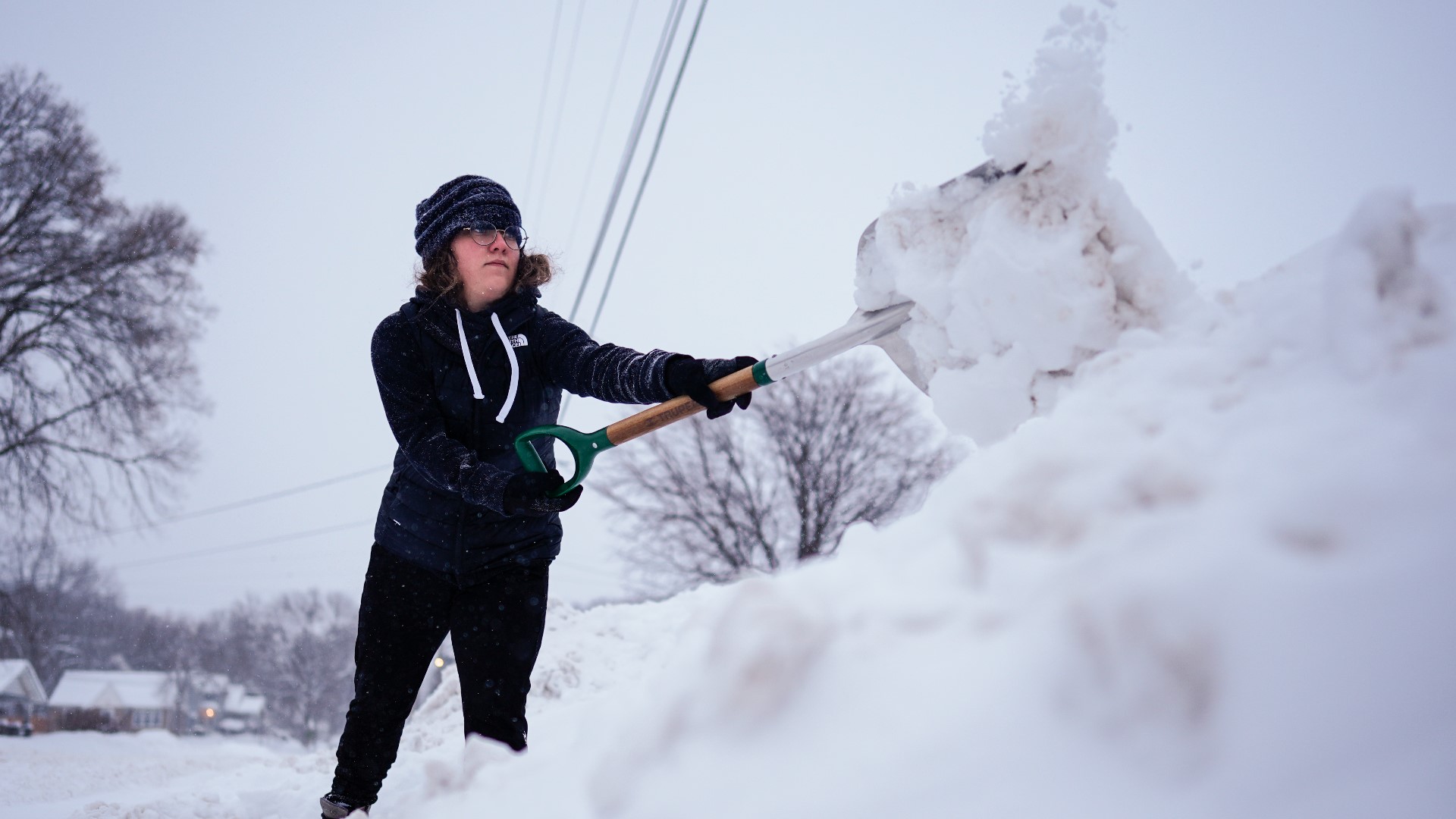DES MOINES, Iowa — After managing several massive snowstorms this week, now Iowans are facing extreme cold.
Local doctors and emergency managers have important reminders on staying safe in extreme cold weather.
With bitter wind chill's reaching deep into the negatives this weekend, Dr. Sarah Ling from MercyOne Waukee said if people do have to go outside, it’s important to know the difference between frost nip and frost bite: frost nip doesn’t lead to long term complications.
“Frostbite is much more severe and literally is freezing of the tissue,” Ling said. “And that causes cell death and eventually, if it's severe enough can lead to amputation, so it's much more severe.”
Signs of frost bite include cold hands and feet, numbness or tingling and hands turning white-ish gray with a waxy hard texture.
Another issue to look out for is hypothermia.
In severe phases of hypothermia, there are several warning signs.
“So, then the heart rate drops, shivering stops, and the breathing rate slows. And that's where the adverse cardiac complications and arrhythmias and severe neurologic damage occurs. And that can actually lead to death,” Ling said.
Polk County’s Extreme Temperature Plan is in place to help people seek resources amid the cold weather.
“So, we have certain criteria that set and so when the temperatures get to a certain degree, we want to make sure that we have spaces where our citizens can go to get some relief from the really cold temperatures,” said Laura Kacer, resiliency coordinator for Polk County Emergency Management.
Kacer said people are encouraged to visit the counties warming centers.
“If there's a barrier in place, whether that be transportation, the housing of a pet, or even just a security concern, we can help to alleviate those concerns and really get people into a location where they can be safe during these extreme temperatures,” Kacer said.
It’s advised to call ahead to check on the open and closed status of hours of operations for warming centers.
Ling said if you plan to use a space heater, make sure there are no fabrics or clothing near them and monitor for carbon monoxide poisoning.
She also said if you have to go outside during extreme weather, it’s important to monitor your situation.
“In terms of injuries and accidents, just don't rush. Slow down, walk slowly. With a short stride, drive slowly if you have to be out in the weather at all,” Dr. Ling said. “And then certainly if you're shoveling, listen to your body, take a break if you're getting too winded or feeling back pain. And then make sure to wear hat scarf mittens to protect your skin and avoid frostbite.”
To find a list of warming centers, click here.

